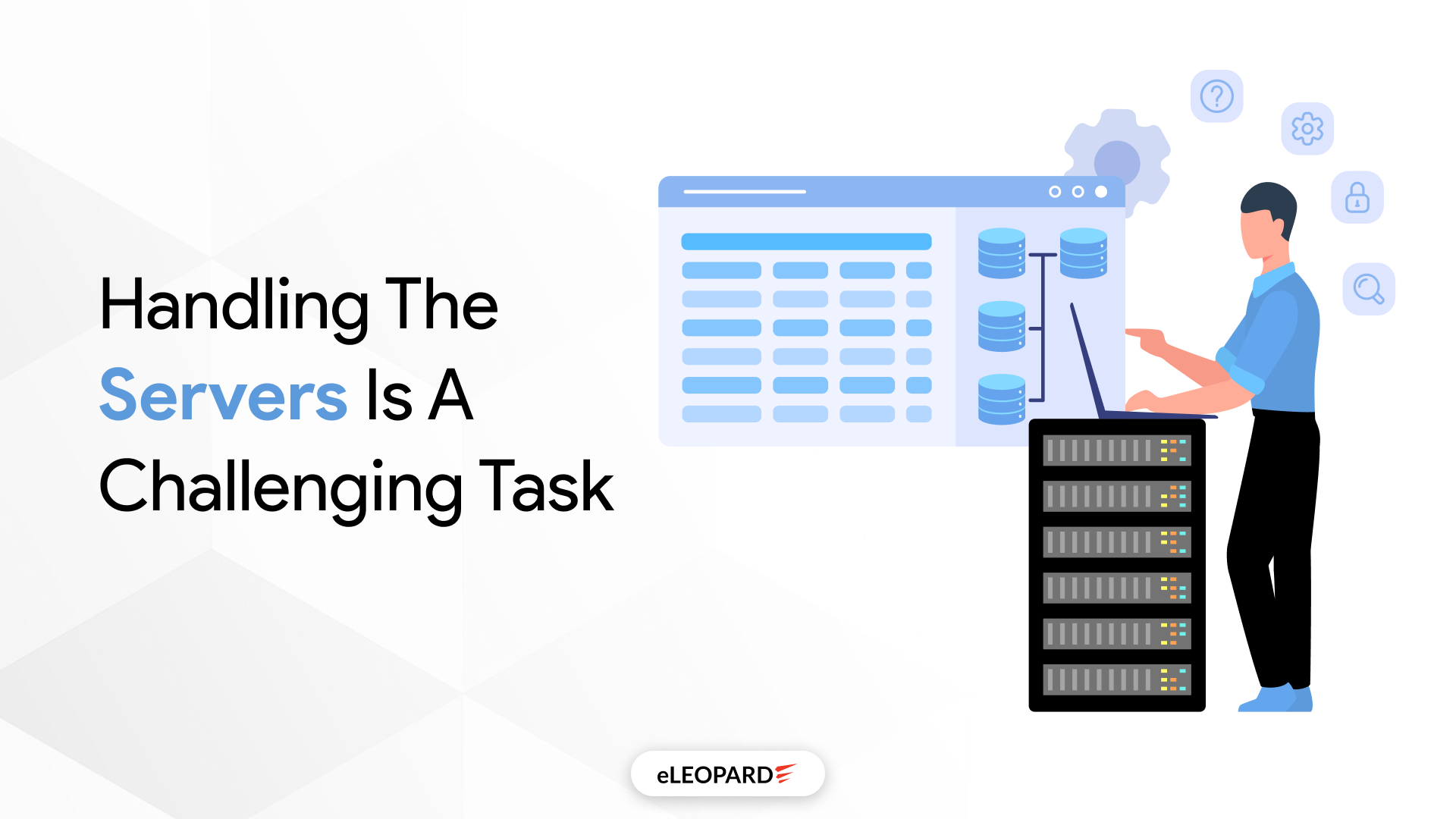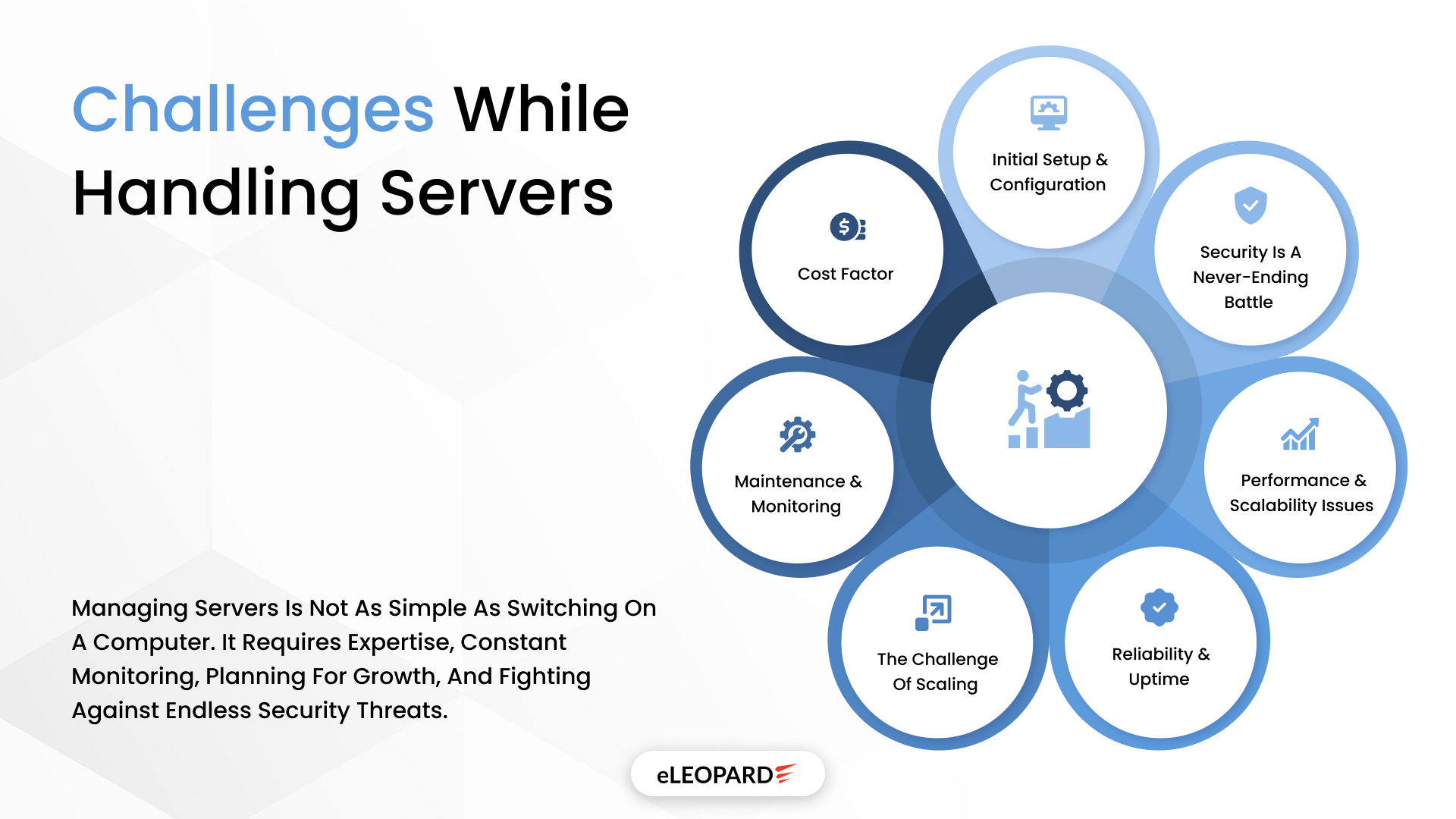Servers are the backbone of the digital world. Every website, mobile app, online game, and streaming platform relies on them. Without servers, there would be no internet, no emails, no cloud storage, and no digital communication.
However, managing servers is not as simple as switching on a computer. It requires expertise, constant monitoring, planning for growth, and fighting against endless security threats. This is why IT administrators often say:
“Keeping servers alive and healthy is like running a hospital that never sleeps.”
What is a Server?
A server is a powerful computer or software that provides services to other computers (called clients) over a network.
- When you visit Google.com, your browser (client) sends a request.
- Google’s servers process the request and send back the webpage.
Types of Servers (Quick Overview)
- Web Servers – Deliver websites (Apache, Nginx).
- Database Servers – Manage data (MySQL, PostgreSQL).
- Application Servers – Run apps & APIs.
- Mail Servers – Send/receive emails.
- File Servers – Store and share files.
- Game Servers – Host online games.
- DNS Servers – Convert domains to IP addresses.
Without servers, the internet would collapse instantly.
Why Handling Servers is Challenging
1. Initial Setup & Configuration
- Choosing the right operating system (Linux is common, Windows Server for enterprises).
- Installing and configuring software: web server, database, firewalls.
- Setting up SSL certificates for secure communication.
- Configuring domains and DNS so users can access websites.
Example: A single typo in DNS records can make an entire website unreachable worldwide.
2. Security is a Never-Ending Battle
Servers are prime targets for hackers.
- Need regular patching of vulnerabilities.
- Must guard against DDoS attacks, SQL injections, and brute-force login attempts.
- Requires firewalls, intrusion detection systems, and encryption.
Case Study:
In 2017, Equifax failed to patch a server vulnerability. Hackers stole the personal data of 147 million people. The cost? Over $1.4 billion in fines and settlements.
3. Performance & Scalability Issues
Servers must handle traffic efficiently.
- High traffic spikes can overload servers.
- Requires load balancing (distributing traffic across servers).
- Caching reduces repeated work for faster responses.
- Optimizing databases is critical for speed.
Example:
On Black Friday, Amazon handles millions of requests per second. If servers aren’t optimized, even a few minutes of downtime can mean millions in lost sales.
4. Reliability & Uptime
Servers are expected to be available 24/7.
- Hardware can fail (hard drive crash, power outage).
- Natural disasters (floods, earthquakes) can destroy data centers.
- Requires backups, redundant systems, and failover mechanisms.
Example:
In October 2021, Facebook’s servers went down for 6 hours due to a misconfiguration. Billions of users were locked out, and businesses relying on Facebook ads lost huge revenue.
5. The Challenge of Scaling
- As the user base grows, a single server is not enough.
- Vertical scaling: upgrading hardware (CPU, RAM, storage).
- Horizontal scaling: adding more servers and balancing load.
- Requires planning for future growth.
Example:
Netflix uses thousands of servers globally. If even a few fail, users face buffering or outages. To prevent this, Netflix built Chaos Monkey, a tool that randomly shuts down servers to test resilience.
6. Maintenance & Monitoring
Servers need constant attention:
- OS and software updates for security.
- Log monitoring to detect suspicious activity.
- Hardware replacements before failures occur.
- Tracking CPU, RAM, and network usage.
Example:
A neglected update on Microsoft Exchange servers in 2021 led to a major global ransomware outbreak.
7. Cost Factor
Running servers is expensive.
- Physical servers need electricity, cooling, hardware replacement, and staff.
- Cloud servers reduce upfront cost but still charge for usage, bandwidth, and storage.
- Misconfigured servers can rack up huge unexpected bills.
Example:
A company mistakenly left test servers running on AWS. Monthly bill? $50,000+.
Modern Solutions to Server Challenges
Organizations deal with these challenges using a mix of:
- Automation Tools (Docker, Kubernetes, Ansible) to reduce manual work.
- Monitoring & Alerts (Grafana, Nagios, Prometheus) for server health.
- Cloud Services (AWS, Azure, Google Cloud) for scaling and redundancy.
- DevOps Practices for faster deployment and recovery.
- Regular Backups & Disaster Recovery Plans to ensure business continuity.
Example:
Startups prefer cloud auto-scaling — servers automatically increase or decrease based on demand.
Real-World Case Studies
1. GitHub Outage (2018)
- Database servers failed after routine maintenance.
- Result: 24 hours of degraded service affecting millions of developers.
2. Amazon AWS Outage (2017)
- A small human error in server maintenance caused massive downtime.
- Thousands of websites and apps dependent on AWS went offline.
3. Google Cloud Outage (2019)
- Networking issue in Google data centers.
- Affected YouTube, Gmail, and Google Docs worldwide.
Lesson:
Even the biggest companies with expert teams struggle with server handling.
Conclusion
Servers are the lifeline of the digital age, but handling them is one of the toughest IT responsibilities.
From setup and security to scaling, monitoring, and cost control, servers require constant care and expertise. Even tech giants like Google, Amazon, and Facebook face server outages — proving how challenging server management truly is.
Cloud computing and automation have made things easier, but the truth remains:
Handling servers is a never-ending, complex, and challenging task.
Elevate Your Business with Smarter Cloud Solutions
Ready to streamline operations, boost scalability, and secure your data—all in one move? Our tailored cloud services are designed to grow with your business. Whether you’re migrating for the first time or optimizing an existing setup, our experts are here to guide you every step of the way.
Connect with us today and discover how the cloud can transform your tomorrow.



